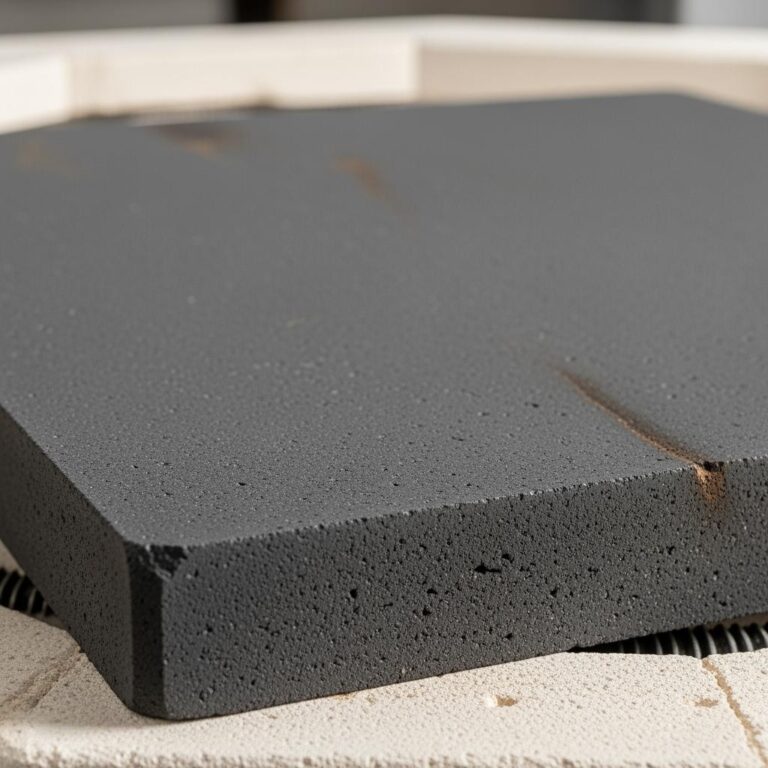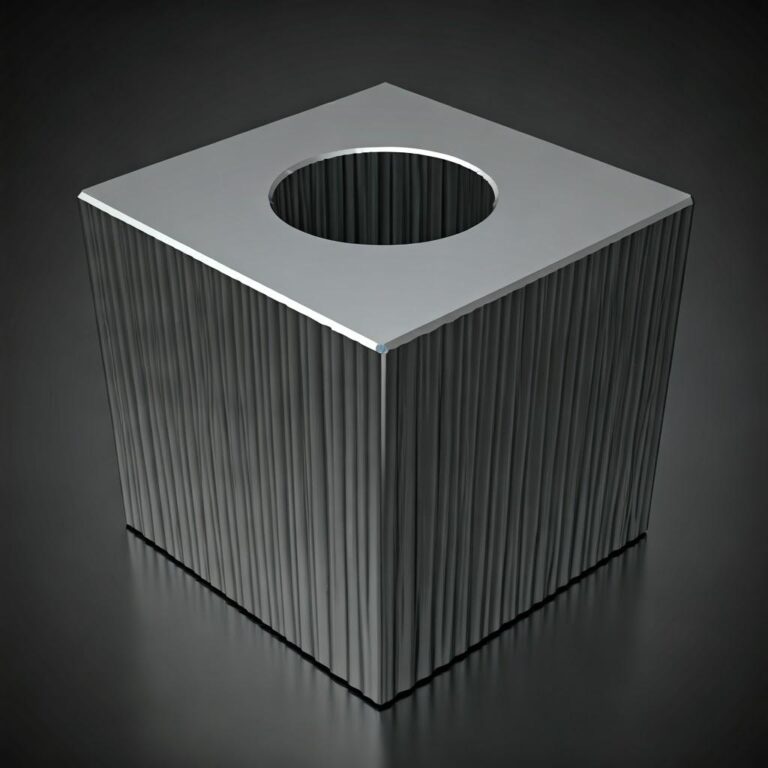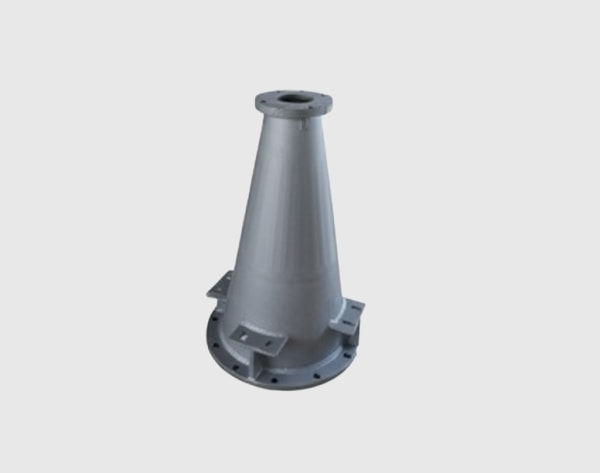Sicarbtech — Silicon Carbide Solutions Expert. Based in Weifang City, China’s silicon carbide manufacturing hub and a member of the Chinese Academy of Sciences (Weifang) Innovation Park, we help Pakistan’s export‑oriented manufacturers design, qualify, and scale custom silicon carbide (SiC) ceramics that meet global performance and compliance standards. With more than 10 years of customization experience and collaborations with 19+ enterprises, Sicarbtech delivers full‑cycle solutions—from powder engineering and forming to firing, machining, metrology, documentation, and technology transfer for localized capability.
Executive Summary: 2025 Outlook for Custom Silicon Carbide Ceramics in Pakistan
Pakistan’s export economy is under pressure to deliver higher performance at lower lifecycle cost while meeting stricter global compliance expectations. Buyers in Europe, the Middle East, and Southeast Asia now weigh traceability, durability, and environmental credentials alongside price. In this context, custom engineered SiC ceramics—spanning R‑SiC, SSiC, RBSiC, and SiSiC—are becoming cornerstone materials for furnace components, wear‑resistant parts, mechanical seals, heat exchangers, and thermal management fixtures. Their combination of high thermal conductivity, low thermal expansion, extreme hardness, and oxidation/corrosion resistance enables tighter process control, longer service intervals, and cleaner audits.
Furthermore, procurement and quality frameworks in Pakistan are maturing. PSQCA‑referenced conformity increasingly appears in local tenders; ISO 9001/14001/45001 programs are common among export‑linked plants; and overseas customers request documentation that maps batch properties to product performance. Currency volatility and freight variability push exporters to seek predictable lead times and PKR‑based ROI models. Building on this, Sicarbtech integrates engineered SiC materials with application design, test evidence, and certification support—so Pakistani exporters can demonstrate capability, win audits, and scale with confidence in 2025 and beyond.
Industry Challenges and Pain Points for Pakistani Exporters
Exporters face a convergence of operational and market pressures. On the shop floor, traditional materials often underperform in high‑temperature, abrasive, or corrosive environments. High‑alumina kiln furniture sags, distorting product geometry; alloy fixtures creep and oxidize in oxidizing flue gases; and generic ceramic bushings develop microcracks under thermal shock. Each failure triggers downtime, rework, and warranty exposure. At the same time, customers expect longer warranties and tighter process capability indices, pushing local manufacturers to improve materials and documentation simultaneously.
The supply chain adds friction. Mixed‑origin SiC batches without tight particle size distributions or microstructural control yield uneven machining outcomes, variable porosity, and unpredictable wear rates. For abrasive media and seal faces, small shifts in impurity levels or grain morphology can alter friction, heat generation, or leakage behavior. Logistics uncertainties—especially during monsoon season—stretch lead times and force safety stocks that tie up working capital. “Every unplanned intervention multiplies cost across departments—production, quality, logistics, and customer service,” notes Engr. Faraz Khan, a reliability auditor working with export manufacturers in Punjab (South Asia Reliability Insights, 2024). He emphasizes the need to engineer mean time between failures to match planned shutdowns and shipment cycles.
Compliance demands have also intensified. Overseas buyers increasingly require ISO‑aligned documentation, REACH and RoHS declarations, and batch‑level traceability that links material properties to product performance. Insurers and auditors ask for preventive maintenance evidence and root‑cause analyses that rely on credible COAs and test data. “Documentation is not bureaucracy—it is the scaffolding that keeps quality stable across time and teams,” says Dr. Nadia Rahman, EHS advisor to multiple export clusters (EHS & Industry Review, 2024). In contrast, transactional sourcing—spot buys without metrology, inconsistent packaging, or incomplete HS documentation—produces uneven field performance and erodes customer trust.
Additionally, exporters must balance customization with manufacturability. Complex geometries that look compelling in CAD can become fragile or cost‑prohibitive without the right forming, sintering, or reaction‑bonding routes. Tolerances that are routine in metals may require different process controls in advanced ceramics. Without early FEA/CFD and DFM guidance, teams burn time on redesigns that delay shipments. “Reliability is engineered, not purchased off a catalog,” adds Prof. Liu, a ceramics specialist associated with the Chinese Academy of Sciences (Materials Engineering Commentaries, 2024). For 2025, winning programs will integrate materials selection, process simulation, and certification pathways from day one.
Sicarbtech’s Silicon Carbide Solutions Portfolio for Export‑Oriented Programs
Sicarbtech engineers SiC components around the duty cycle, not the catalog page. For high‑temperature fixtures and kiln furniture used in export ceramics and powder metallurgy, R‑SiC and SiSiC shelves, beams, and posts deliver sag resistance, thermal shock tolerance, and low thermal mass for faster cycles. In heat‑intensive industrial equipment, SiSiC radiant elements and recuperator cores maintain emissivity and geometry in oxidizing atmospheres, stabilizing temperature fields and improving energy intensity. For fluid‑handling and rotating equipment destined for chemical or textile customers, SSiC mechanical seal faces, bushings, and valve seats provide mirror‑lapped surfaces with low leakage and wear.
In erosive or corrosive streams—common in export‑bound filtration or process systems—RBSiC/SiSiC liners, nozzles, and wear tiles resist particle attack while offering shape complexity. Where thermal shock is severe, R‑SiC flame‑facing tiles and burners absorb gradients and maintain flame geometry during frequent starts and fuel transitions. Each project begins with duty mapping and FEA/CFD to validate stress, temperature, and flow behavior. Proprietary firing or infiltration profiles lock microstructures; finishing and lapping deliver tight tolerances and surfaces tailored to heat transfer, sealing, or sliding. Documentation bundles PSQCA‑referenced conformity, ISO 9001/14001/45001, and, when needed, REACH/RoHS declarations and IATF 16949‑aligned control plans with PPAP‑style evidence.
Technical Performance Comparison for Export‑Grade Components
Material properties that drive export performance and audit readiness
| Property and operating relevance | R‑SiC (Recrystallized) | SSiC (Sintered) | RBSiC / SiSiC (Reaction‑bonded) | High‑alumina ceramic | Heat‑resistant alloy steel |
|---|---|---|---|---|---|
| Maximum service temperature in air (°C) | 1,650–1,700 | 1,600–1,700 | 1,380–1,480 | 1,400–1,600 | 900–1,100 |
| Thermal conductivity at 25°C (W/m·K) | 20–35 | 90–120 | 60–80 | 2–6 | 16–25 |
| Coefficient of thermal expansion (×10⁻⁶/K) | ~4.0–4.5 | ~4.0–4.2 | ~4.2–4.8 | 6–8 | 14–17 |
| Flexural strength at RT (MPa) | 100–180 | 350–450 | 280–380 | 30–60 | 150–220 |
| Hardness (HV10) | 22–24 GPa | 24–26 GPa | 20–22 GPa | 10–12 GPa | 2–4 GPa |
| Oxidation resistance at 1,200°C | Excellent | Excellent | Very good | Good | Fair |
SSiC leads where density, hardness, and surface finish are critical, such as mechanical seals and precision fixtures. R‑SiC excels in thermal‑shock‑heavy tiles and furniture. RBSiC/SiSiC balances shape complexity with high conductivity for radiant and wear components.
Export lifecycle economics in representative Pakistani programs
| Export application | Conventional baseline | Sicarbtech SiC configuration | Throughput/energy impact | Maintenance impact | Indicative payback (months) |
|---|---|---|---|---|---|
| Ceramic kiln furniture for export ware | Alumina/mullite shelves | R‑SiC/SiSiC shelves & beams | Faster cycles; fewer warps | Longer campaigns; less scrap | 8–14 |
| Chemical pump mechanical seals | Carbon/alumina pairs | SSiC‑on‑SSiC lapped faces | Lower friction; cooler operation | Fewer leak events | 4–7 |
| Recuperator cores in heaters | Alloy/ceramic hybrids | SiSiC compact core | Higher heat recovery; stable ΔT | Reduced fouling | 8–12 |
| Wear liners for process streams | High‑alumina tiles | SiSiC/RBSiC tiles | Lower erosion; stable geometry | 2–3× life | 6–12 |
These ranges reflect duty conditions reported by Pakistani exporters serving regional markets. The pattern holds: engineered SiC improves energy intensity, yield, and uptime.
Compliance and documentation alignment for export tenders
| Requirement from overseas buyers | Generic ceramic supply | Sicarbtech export‑grade model | Practical benefit to Pakistani exporter |
|---|---|---|---|
| ISO 9001/14001/45001 | Partial or missing | Full documentation bundles | Faster vendor approval |
| REACH/RoHS declarations | Often absent | Provided on request | Smooth EU market access |
| Batch traceability (COA) | Limited | Lot‑linked COAs with test data | Faster RCA and audit responses |
| PPAP/control plans (where applicable) | Rare | IATF‑aligned packs available | Automotive/industrial acceptance |
| Handling & packaging SOPs | Basic | ESD/moisture‑safe and export‑ready | Lower transit risk, fewer claims |
Export readiness is as much about paperwork and packaging as it is about materials; Sicarbtech’s approach closes both gaps simultaneously.
Real‑World Applications and Success Stories from Pakistani Exporters
A ceramics exporter near Lahore struggled with kiln furniture sagging that caused dimensional drift in tableware bound for the Middle East. Sicarbtech supplied R‑SiC shelves and beams with tuned thickness and surface finish matched to the firing curve. The plant saw flatter ware, fewer rejects, and a measurable reduction in cycle time due to lower thermal mass. The team recouped investment within a year, including savings from reduced rework.
In Karachi’s chemical equipment cluster, a pump OEM faced warranty claims tied to leakage and seal wear in export shipments. We delivered SSiC‑on‑SSiC mechanical seal sets with sub‑micron flatness and mirror finish, along with handling and flush plan guidance. Field returns dropped sharply, cooling and power draw improved by a noticeable margin, and the OEM earned preferred supplier status with a Gulf customer.
A Sindh‑based heat‑treatment equipment exporter needed compact recuperators that resisted fouling. Sicarbtech produced SiSiC cores with channel geometry tuned by CFD to minimize particle deposition without sacrificing heat transfer. Stack temperatures stabilized, heat recovery improved, and post‑install audits passed on first attempt—shortening cash cycles.



Technical Advantages and Implementation Benefits with Global Compliance
Silicon carbide’s wide property envelope—high thermal conductivity, low thermal expansion, high hardness, and excellent oxidation/corrosion resistance—translates directly into export‑grade performance. Furnaces heat up faster and more uniformly, reducing fuel and scrap. Seals run cooler and last longer, reducing warranty exposure. Wear parts maintain geometry, protecting downstream tolerances. These effects combine to lift OEE and reduce total cost of ownership—critical in contracts where penalties or bonus‑malus terms are tied to uptime and energy intensity.
Sicarbtech embeds compliance into engineering. We align specifications with PSQCA references, deliver ISO 9001/14001/45001 documentation, and provide REACH/RoHS declarations upon request. For automotive or industrial buyers who require it, we prepare IATF 16949‑aligned control plans and PPAP‑style submissions. Metrology and test data—density, porosity, flexural strength, hardness, thermal conductivity, flatness, roughness, and, where relevant, leak tests—are bundled into COAs. “Compliance is a design constraint, not an afterthought,” emphasizes Dr. Li, CAS‑affiliated materials scientist (CAS Industry Notes, 2024). Designing for documentation shortens acceptance cycles and strengthens audit posture.
Custom Manufacturing and Technology Transfer Services by Sicarbtech
Sicarbtech’s competitive advantage is a turnkey model that fuses advanced R&D, disciplined manufacturing, and knowledge transfer, anchored by the Chinese Academy of Sciences (Weifang) Innovation Park.
We specialize in R‑SiC, SSiC, RBSiC, and SiSiC, selecting routes—recrystallized, sintered, or reaction‑bonded—based on duty, geometry, and economic targets. Controlled powder size distributions and chemistry underpin repeatable microstructures. Forming methods such as cold isostatic pressing, slip casting, and extrusion enable thin walls, large monoliths, and complex channels. Proprietary firing or infiltration profiles lock density and grain structure, while machining, lapping, and polishing deliver tight tolerances and functional surfaces for heat transfer or sealing. Thermo‑mechanical validation with FEA/CFD ensures geometry survives cycling and flow‑induced stresses.
Technology transfer is available for Pakistani exporters who want to localize value and shorten lead times. We deliver process know‑how from green body formation through debinding, sintering/infiltration, machining, and inspection; equipment specifications for mixers, presses, kilns/furnaces, classifiers, and finishing lines; and training programs for operators, QC, and maintenance. Factory establishment services cover feasibility studies, utilities and HVAC, plant layout, EHS alignment with Pakistani regulations, and line commissioning. Hybrid models retain critical high‑temperature steps in Weifang while machining, finishing, packaging, and inspection occur locally—reducing FX exposure and accelerating delivery.
Quality systems and certification support are built in. Statistical process control monitors density, porosity, dimensions, and surface metrics; mechanical and thermal testing validate performance; and documentation bundles ease buyer and insurer audits. For OEM/ODM programs, we prepare control plans, capability studies (Cp/Cpk), MSA where appropriate, and PPAP‑style submissions. Post‑launch, our engineers stay engaged—tuning firing curves, tool designs, bond chemistries, and yields—and linking field performance back to batch properties for continuous improvement. Over a decade and more than 19 enterprise collaborations, this comprehensive, transferable approach has produced faster qualifications, fewer first‑run issues, and clear PKR‑denominated ROI.
Future Market Opportunities and 2025+ Trends for Export‑Grade SiC
Three vectors will expand SiC adoption among Pakistani exporters. First, energy economics and ESG reporting will continue to reward materials that reduce fuel intensity and extend service intervals in furnaces and process equipment. Second, buyers will tighten documentation expectations—traceability, PPAP‑style evidence, and environmental declarations—favoring suppliers who engineer both materials and paperwork. Third, regional supply chains will localize downstream steps—machining, finishing, metrology, and packaging—reducing lead times and currency risk.
Moreover, product requirements will shift toward higher temperatures, mixed atmospheres, and tighter tolerances as export customers push process intensification. SiC’s oxidation resistance, hardness, and thermal stability become structural advantages in this world. As pilot programs convert to framework agreements, the exporters who invested early in engineered SiC and documentation will be positioned to capture long‑term contracts.
Frequently Asked Questions
Which SiC grade should I choose for export applications?
R‑SiC is ideal for thermal‑shock‑prone tiles and kiln furniture; SSiC offers premium density, hardness, and polish for seals and precision components; SiSiC (RBSiC) balances complex geometry with strong thermal conductivity for radiant, wear, and heat‑exchange parts. We finalize selection after duty mapping, FEA/CFD, and manufacturability reviews.
Can Sicarbtech support REACH, RoHS, and ISO documentation for exports?
Yes. We provide ISO 9001/14001/45001 documentation, PSQCA‑referenced conformity, and REACH/RoHS declarations where required. For automotive or industrial buyers, we prepare IATF‑aligned control plans and PPAP‑style submissions.
How do you ensure surface finish and flatness for mechanical seal faces?
We combine controlled powders with precision forming and mirror lapping. SPC tracks Ra/Rz, flatness, and parallelism; COAs document surface metrics along with density and hardness. First‑article inspections and capability studies establish confidence before ramp.
What payback can exporters expect from SiC upgrades?
Kiln furniture upgrades typically pay back in 8–14 months via faster cycles and fewer rejects. SSiC seals often return in 4–7 months due to reduced leaks and energy draw. Recuperator and radiant element upgrades return in 8–16 months depending on fuel prices and duty severity.
Do you provide OEM/ODM and private labeling for export orders?
Absolutely. We offer OEM/ODM services, private labeling, custom packaging, and batch‑linked traceability so you can build your brand while delivering audit‑ready products.
How can we localize parts of the process in Pakistan to reduce lead times?
Through technology transfer, we establish machining, lapping, inspection, and packaging cells locally. Critical firing or infiltration can remain in Weifang, while downstream steps move to Pakistan to shorten lead times and reduce FX exposure.
What technical data do you need to start engineering a custom part?
We typically request temperature and atmosphere profiles, gas chemistry (including alkali/sulfur), flow/particle data if relevant, mechanical loads, geometry and tolerances, failure history, target campaign length, and installation constraints. These inputs drive grade selection, FEA/CFD, and DFM.
Can Sicarbtech assist with packaging and logistics for export shipments?
Yes. We design moisture‑barrier and shock‑resistant packaging, include humidity/tilt indicators when needed, and prepare HS documentation to streamline customs. We coordinate phased deliveries to match your shipment schedule.
How do you link batch properties to field performance for audits?
Our COAs and PPAP‑style packs tie batch‑level properties—density, porosity, hardness, thermal conductivity, flatness—to KPIs such as cycle time, leak incidence, wear rate, and campaign length, simplifying customer and insurer audits.
What lead times should we plan for export‑grade SiC components?
Custom parts typically ship in 4–10 weeks depending on complexity and volume. We align deliveries with your production and shipment windows and can position safety stock under localization models.
Making the Right Choice for Your Operations
Switching to custom engineered SiC ceramics is not a cosmetic change; it is a strategic upgrade to reliability, energy intensity, and audit readiness. Sicarbtech’s integrated approach—R‑SiC, SSiC, RBSiC, and SiSiC materials; FEA/CFD‑guided design; ISO/REACH‑ready documentation; and transferable manufacturing know‑how—gives Pakistani exporters a predictable path from concept to qualified product. Whether your constraint is a sagging shelf, a leaking seal, or a fouling heat‑exchange core, the right SiC solution will stabilize your process and strengthen your export competitiveness.
Get Expert Consultation and Custom Solutions
Share your product targets, duty cycles, tolerances, and compliance requirements with Sicarbtech’s engineering team. We will propose the optimal SiC grade and geometry, simulate performance, and map a qualification plan synchronized with production and shipment schedules—complete with a PKR‑based ROI model and documentation packs for buyer audits. Contact: [email protected] or +86 133 6536 0038.
Explore Related Cluster Resources
- Why Exporters Prefer Custom Silicon Carbide Ceramics
- Benefits of Engineered SiC Components in Global Markets
- Types of Custom Silicon Carbide Ceramics for Export Use
- Tailored SiC Ceramic Parts for Industrial Export Applications
- Design Capabilities for Custom SiC Ceramic Manufacturing
- How We Engineer Silicon Carbide Components for Exporters
- OEM and ODM Services for SiC Export Manufacturers
- Compliance and Certifications for Exporting SiC Products
- Export-Grade Silicon Carbide Ceramics with ISO and REACH
- Packaging and Logistics Options for SiC Export Orders
Article Metadata
Last updated: 2025-09-23
Next scheduled review: 2026-01-15
Content freshness indicators: 2025 Pakistan export outlook integrated; PSQCA, ISO 9001/14001/45001, and REACH/RoHS considerations reflected; IATF 16949 support where applicable; ROI modeled in PKR; case insights from 2023–2025 Sicarbtech engagements with 19+ enterprises; trends aligned with energy volatility, ESG pressures, mixed‑fuel usage, and localization initiatives.





